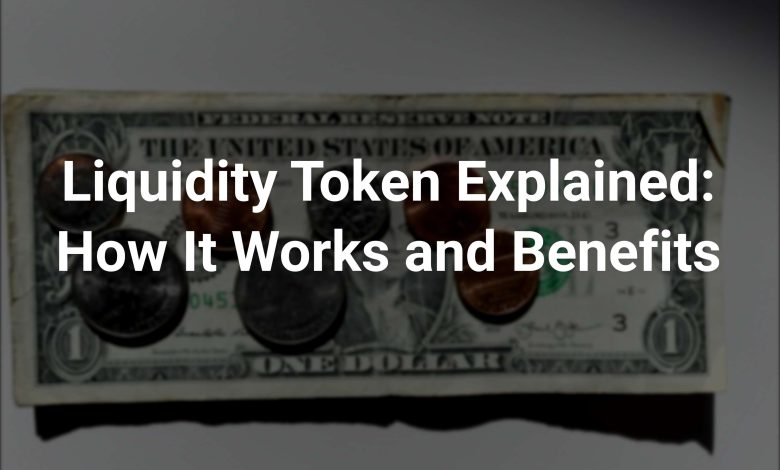Liquidity Token Explained: How It Works and Benefits

Liquidity tokens are a new type of cryptocurrency designed to solve the problem of liquidity in decentralized exchanges (DEXs). Unlike centralized exchanges with large order books that can easily match buyers and sellers, DEXs rely on liquidity pools to facilitate trades. Liquidity tokens enable users to contribute to these pools and earn a share of the trading fees generated by the DEX.
In this Liquidity Token Starter Guide, we will explore how liquidity tokens work and their benefits to liquidity providers and traders. We will also meet the minds behind liquidity tokens and provide a live price status analysis.
What are Liquidity Tokens?
Liquidity tokens are ERC-20 tokens that represent a share in a liquidity pool. Liquidity pools are tokens locked into smart contracts and used to facilitate trades on DEXs. When traders place a trade, they swap one token for another from the pool. The trading fees generated by the DEX are distributed to liquidity providers, who earn a share of the fees based on their contribution to the pool.
For example, let’s say you have 1 ETH and want to trade it for 100 USDT on a DEX. If insufficient liquidity in the ETH/USDT pool, your trade may not be executed, or you may receive a less favorable price. However, if there is enough liquidity, your trade will be executed instantly, and the trading fees generated by the DEX will be distributed among the liquidity providers.
Benefits of Liquidity Tokens
There are several benefits to holding liquidity tokens. For liquidity providers, liquidity tokens enable them to earn a passive income from their crypto holdings. Instead of simply having their tokens, they can put them to work by contributing to a liquidity pool and making a share of the trading fees generated by the DEX. Additionally, liquidity tokens are often tradable on secondary markets, enabling liquidity providers to sell their tokens and realize a profit.
For traders, liquidity tokens ensure enough liquidity in the pool to execute trades instantly and at a fair price. This reduces the likelihood of price slippage, where the price of a token fluctuates due to low liquidity, and improves the overall trading experience.
Meet the Minds Behind Liquidity Token
The minds behind liquidity tokens are often teams of developers passionate about solving the liquidity problem in DEXs. One example is the team behind Uniswap, one of the most popular DEXs in the market. Uniswap pioneered the use of liquidity pools and tokens, and its UNI token has become one of the most valuable liquidity tokens in the market.
Another example is the team behind Balancer, a DEX that uses liquidity pools to enable traders to trade multiple tokens simultaneously. Balancer’s BAL token is a liquidity token that allows liquidity providers to earn a share of the trading fees generated by the platform.
Liquidity Token Price Analysis Live Price Status
The price of liquidity tokens can be volatile as they are often affected by market sentiment and the overall trading volume of the DEX. However, liquidity tokens have the potential to rise in value as DEXs and liquidity pools grow in popularity.
As of March 8, 2023, Uniswap’s liquidity token UNI is priced at $6.09. BAL, the liquidity token for Balancer, costs $6.13. However, it should be kept in mind that these prices fluctuate rapidly and investors should do research before making an investment decision.
In conclusion, liquidity tokens have emerged as a solution to the liquidity problem faced by decentralized exchanges. They allow users to contribute to liquidity pools and earn a share of the trading fees generated by the DEX. Liquidity tokens benefit liquidity providers and traders, such as a passive income stream and improved trading experience. The minds behind liquidity tokens are teams of developers passionate about solving the liquidity problem in DEXs, such as those behind Uniswap and Balancer. While the prices of liquidity tokens can be volatile, they have the potential to rise in value as DEXs and liquidity pools grow in popularity. Investors need to conduct thorough research before investing in liquidity tokens.



